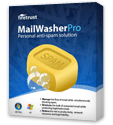Tis the season of Facebook and Messenger account impersonators
Beware of new Facebook Friend requests and Messenger message requests coming in the name of people you may already be friends with on the platform. A lot of these requests may even have same profile photo as your friend uses, but may not actually come from the accounts you are friends with.
First, let's acknowledge that there are valid reasons why a Facebook member might create a new account. For instance, they could have a new phone or computer and can't recover the logins from the old device for some valid reason. So, if that person sends friend requests to his previous friends it is probably not a scam (er, maybe). But, that person would be prudent to write a post explaining what happened in the new profile, or in Messenger messages.
But, let's get serious. Facebook accounts are juicy targets for scammers who copy user names, a photo and some details and create a fake, or clone account of somebody you know. They do this so they can scam that person's friends. Always check the member's profile before replying to an unexpected message request that says it is from a Facebook User, possibly with a new account, even if it has the profile photo that friend has been using. Just do a quick search for your friend's name then go to that friend's profile and see if they or their friends mention them possibly being "hacked." They usually have not been hacked, per se, but rather had their account cloned by an impersonator.
Hacked and cloned accounts are used to scam the victim's friends, either by sending a new Friend Request to a fake profile controlled by a criminal, or via specially crafted messages in Facebook Messenger. They can do this if you have an unprotected Friends List that is viewable by other people or the public. If you want to protect your friends from being contacted by scammers who might want to clone your account, just make your Friends list private and viewable to only yourself. To do this go to your account settings, then click or tap on Privacy. the Privacy section contains a setting labeled: Who can see your friends list? To protect your friends from scammers and potential account cloners, set it to: Only Me..
Continue reading "Tis the season of Facebook and Messenger account impersonators" »





